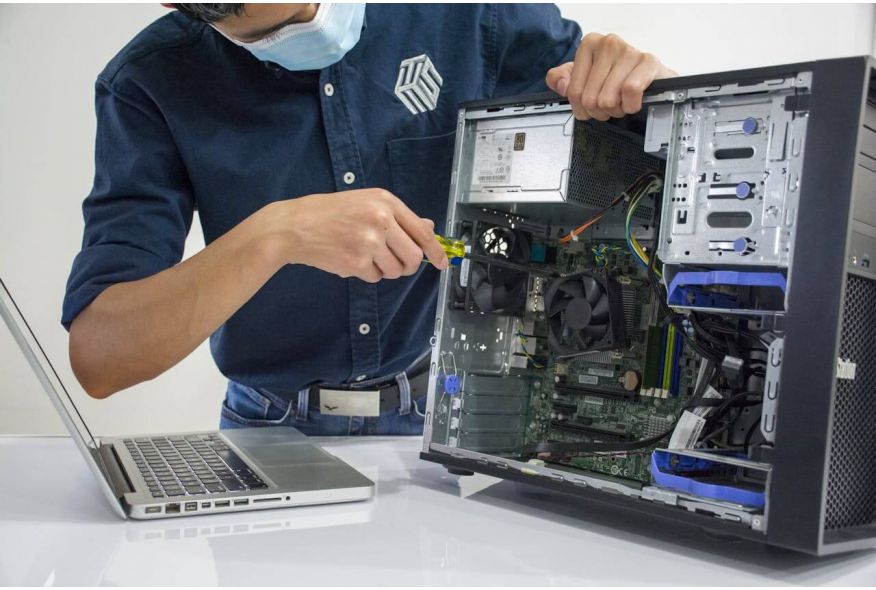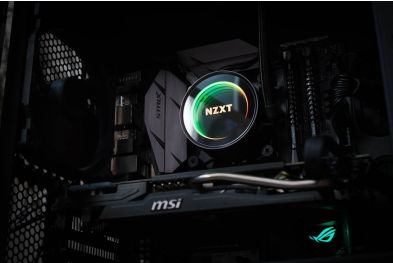How to Do Cable Management and Improve Airflow in Your PC
A well-organized PC isn’t just about aesthetics—it’s about performance. Proper cable management improves airflow, reduces dust buildup, and keeps your system running cool and efficiently. Whether you’re building a new PC or upgrading an existing one, mastering cable management is a must. In this guide, we’ll walk you through the steps to organize your cables and optimize airflow in your PC.
Why is Cable Management Important?
Good cable management offers several benefits:
Improved Airflow: Organized cables allow air to flow freely, keeping your components cool.
Easier Maintenance: A tidy setup makes it easier to clean and upgrade your PC.
Better Aesthetics: A clean interior looks professional and showcases your build.
Reduced Dust Buildup: Proper airflow reduces dust accumulation, which can clog fans and vents.
Tools You’ll Need
Before you start, gather these tools and supplies:
Zip Ties or Velcro Straps: For bundling and securing cables.
Cable Combs: To organize and straighten cables (especially for custom builds).
Screwdriver: For opening your case and adjusting components.
Cable Extensions (optional): For better cable routing and aesthetics.
Step-by-Step Guide to Cable Management
1. Plan Your Layout
Before connecting any cables, plan where each component will go and how the cables will route. Consider:
The location of your power supply (PSU).
The placement of your motherboard, GPU, and storage drives.
The path for cables to reach their destinations without obstructing airflow.
2. Route Cables Behind the Motherboard Tray
Most modern PC cases have a dedicated space behind the motherboard tray for cable routing. Use this space to hide and organize cables:
Feed cables through the nearest cutouts or grommets.
Bundle similar cables together using zip ties or Velcro straps.
3. Use Cable Ties and Combs
Zip Ties: Secure cables to the case’s cable management hooks or tie-down points.
Velcro Straps: Ideal for reusable and adjustable bundling.
Cable Combs: Use these to straighten and align cables, especially for custom sleeved cables.
4. Connect Cables Strategically
24-Pin Motherboard Cable: Route this thick cable through the closest cutout to the motherboard.
8-Pin CPU Power Cable: Route this cable through the top cutout of the case.
SATA Cables: Connect these to your storage drives and route them behind the motherboard tray.
GPU Power Cables: Route these cables from the PSU or through the bottom of the case.
5. Keep Cables Away from Fans
Ensure cables don’t obstruct fans or airflow paths. Use tie-down points to secure cables away from moving parts.
6. Use Modular Power Supplies (if possible)
Modular PSUs allow you to connect only the cables you need, reducing clutter. If you don’t have a modular PSU, bundle unused cables and tuck them away in an unused drive bay.
7. Test Before Finalizing
Before securing all cables, power on your PC to ensure everything works correctly. Make adjustments if needed.
Tips to Improve Airflow
Once your cables are organized, focus on optimizing airflow:
1. Install Fans Correctly
Intake Fans: Place these at the front or bottom of the case to draw cool air in.
Exhaust Fans: Place these at the rear or top of the case to expel hot air.
2. Use Positive Air Pressure
Having more intake fans than exhaust fans creates positive air pressure, reducing dust buildup.
3. Remove Unused Drive Cages
If your case has removable drive cages, take out the ones you’re not using to improve airflow.
4. Keep Your PC Clean
Regularly clean dust filters, fans, and vents to maintain optimal airflow.
5. Avoid Overcrowding
Leave enough space between components to allow air to flow freely.
Benefits of Good Cable Management and Airflow
Lower Temperatures: Improved airflow keeps your CPU, GPU, and other components cool.
Quieter Operation: Efficient cooling reduces the need for fans to run at high speeds.
Longer Lifespan: Cooler components last longer and perform better.
Easier Upgrades: A tidy setup makes it easier to add or replace components.
Final Thoughts
Cable management and airflow optimization are essential for building a high-performance PC. By organizing your cables and ensuring proper airflow, you can keep your system cool, efficient, and looking great. Whether you’re a beginner or an experienced builder, these tips will help you create a clean and functional setup.
Reminder:
Found this guide helpful? Share it with your friends and fellow PC enthusiasts on social media! Let’s help everyone build cleaner, cooler, and more efficient PCs. 🚀
By following these steps, you’ll be able to master cable management and improve airflow in your PC, ensuring your system runs smoothly and looks amazing. Happy building!







